SEO is dead, good content is pointless, if your post isn't viral overnight, it's worthless, traffic without conversion means something - we can keep harping on these tired takes. But we won't.
Because you already know which rookie mistakes to avoid and have probably memorized the cardinal sins of digital marketing.
A lot has changed in the marketplace since 2023, particularly with the introduction of OpenAI's ChatGPT and the mainstream adoption of AI.
These tools have rendered traditional metrics largely meaningless. Yet companies keep making the same expensive mistakes with their marketing budgets.
In 2025, you need to focus more on strategy than tactics. Digital marketing hasn’t become harder. It’s just become less forgiving of lazy calls. The cost of inertia now is visibility, trust, and actual growth.
Let’s review top digital marketing errors so that you can unstuck yourself from the rut you’re probably in right now.
TL;DR
- AI has fundamentally changed SEO through zero-click results. Companies seeing success in 2025 create content so valuable that people click through despite AI summaries, building topical authority rather than chasing keywords.
- SEO is still worth it, but only if you treat it like a system. Build authority over time, not traffic hacks.
- Single-channel dependency creates catastrophic risk when algorithms change overnight. Email marketing remains the most stable owned media foundation, while cross-channel attribution reveals which combinations actually drive quality leads.
- Audience targeting fails when companies rely on internal assumptions instead of actual customer data. Businesses often target IT departments when budget holders sit in operations or finance, wasting entire campaign budgets on the wrong decision-makers.
- Brand positioning becomes meaningless when you can't explain your difference in one sentence. If your positioning statement requires a decoder ring, visitors will bounce within seconds because the messaging doesn't connect with their immediate needs.
- Overoptimization backfires when multiple CTAs and animations overwhelm users, causing them to become less effective. The "one primary action per page" rule increases conversions more than endless A/B testing of button colors ever will.
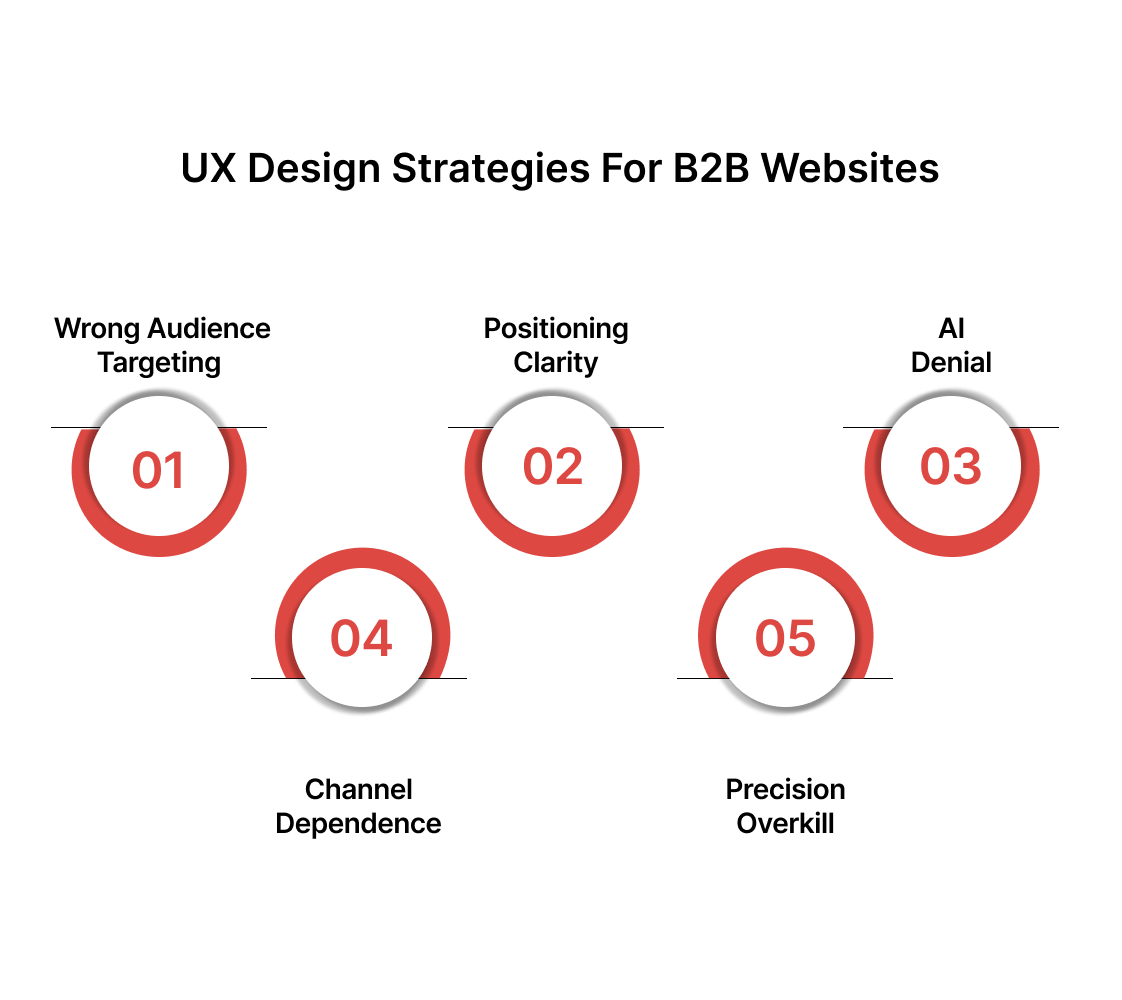
Mistake#1: Wrong Audience Targeting
You might hire the best copywriter in the whole country to craft your messaging. A Pulitzer-worthy strategist, even. But if your targeting is off, none of it matters. This happens more than you'd think, especially when companies assume they understand their audience without proper validation.
The problem starts with broad assumptions. Companies create buyer personas based on internal discussions rather than actual customer data.
They target "decision makers" without understanding the complete buying committee. B2B SaaS companies particularly struggle here, often targeting IT departments when the actual budget holders sit in operations or finance.
Biggest mistake of the lot: Writing content that targets peers instead of end users. Founders speak to other founders. Marketers write for other marketers. The result is a copy that flatters your competitors but confuses potential buyers.
Look, your peers likely already know what you’re solving. Your potential buyers don’t. Messaging that’s too insider-driven creates distance. It sounds smart, but feels irrelevant to the person who actually needs to take action.
Possible solutions:
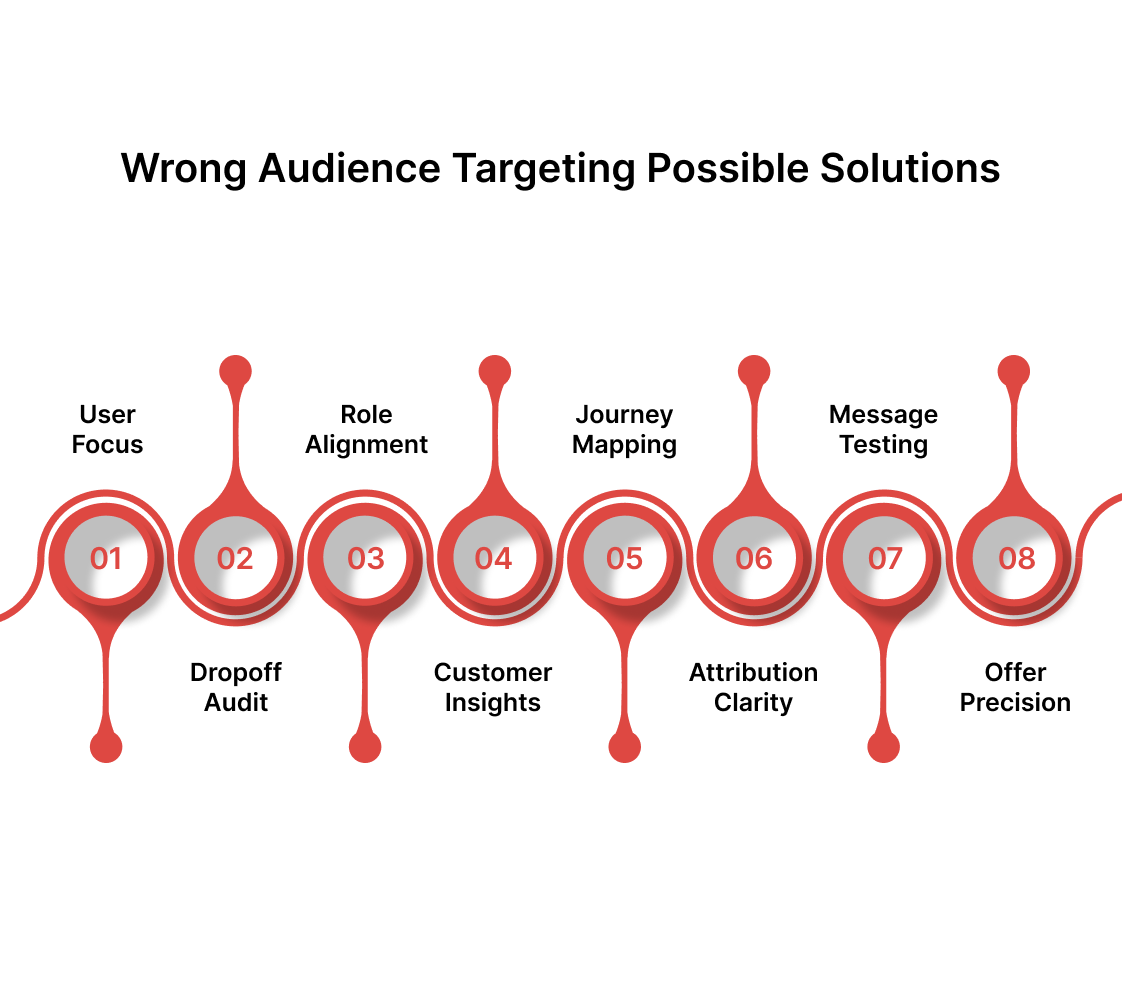
- Write for the end-users, always: It keeps the tone consistent, avoids buzzwords, and directly reflects the core issue. Ego-driven content that alienates the actual decision-makers
- Audit where users drop off: What feels like poor UX is often misaligned messaging. A sharp exit rate doesn’t always mean bad design. It usually signals you’re talking to the wrong person, or saying the wrong thing at the wrong time.
- Use lightweight Account-based Marketing to align messaging with real buying roles across the account: Each stakeholder comes in with different priorities. Craft role-specific touchpoints instead of repeating the same pitch across the org chart.
- Interview real customers, not sales reps: Secondhand insights are filtered through internal bias. You need unfiltered language and raw decision-making context. That’s where good messaging starts.
- Map the entire buying journey: Don't just target one person. Identify every stakeholder involved in the purchase decision and create content that speaks to each role's specific concerns.
- Use attribution data properly: Track which channels and touchpoints actually drive conversions, not just first-touch or last-touch metrics. This reveals where your real audience engages.
- Stop guessing which pain point resonates: Run direct-response tests. Spend $200 to test six angles on paid. You’ll learn more in five days than months of internal brainstorming.
- Refine your offer for each campaign: Not every value prop belongs in every message. Trying to say everything at once weakens your point. Match the promise to what the segment actually values. Nothing more.
Pro tip: Use reverse IP lookup on high-intent page visitors. Track which companies visit your pricing or demo pages but don't convert. Then, research these companies' org charts to identify the actual decision-making structure you should target.
Mistake#2: Your Brand Positioning is Confusing
Brand or sales positioning defines how you want to be perceived in the market relative to competitors. It's the mental space you occupy in your customer's mind. The thumb rule is simple: if you can't explain what makes you different in one sentence, your positioning is broken.
B2B SaaS companies get this wrong by focusing on features instead of outcomes. They create positioning statements that sound like technical specifications rather than clear value propositions. Complexity becomes their enemy. When everything sounds important, nothing feels important.
At Beetle Beetle, we come across this constantly during client consultations. Companies present us with positioning statements that require a decoder ring.
The lack of clarity leaves us in a terrible position when designing their websites because we can't communicate what they actually do. Visitors bounce within seconds because the messaging doesn't connect with their immediate needs.
Possible solutions:
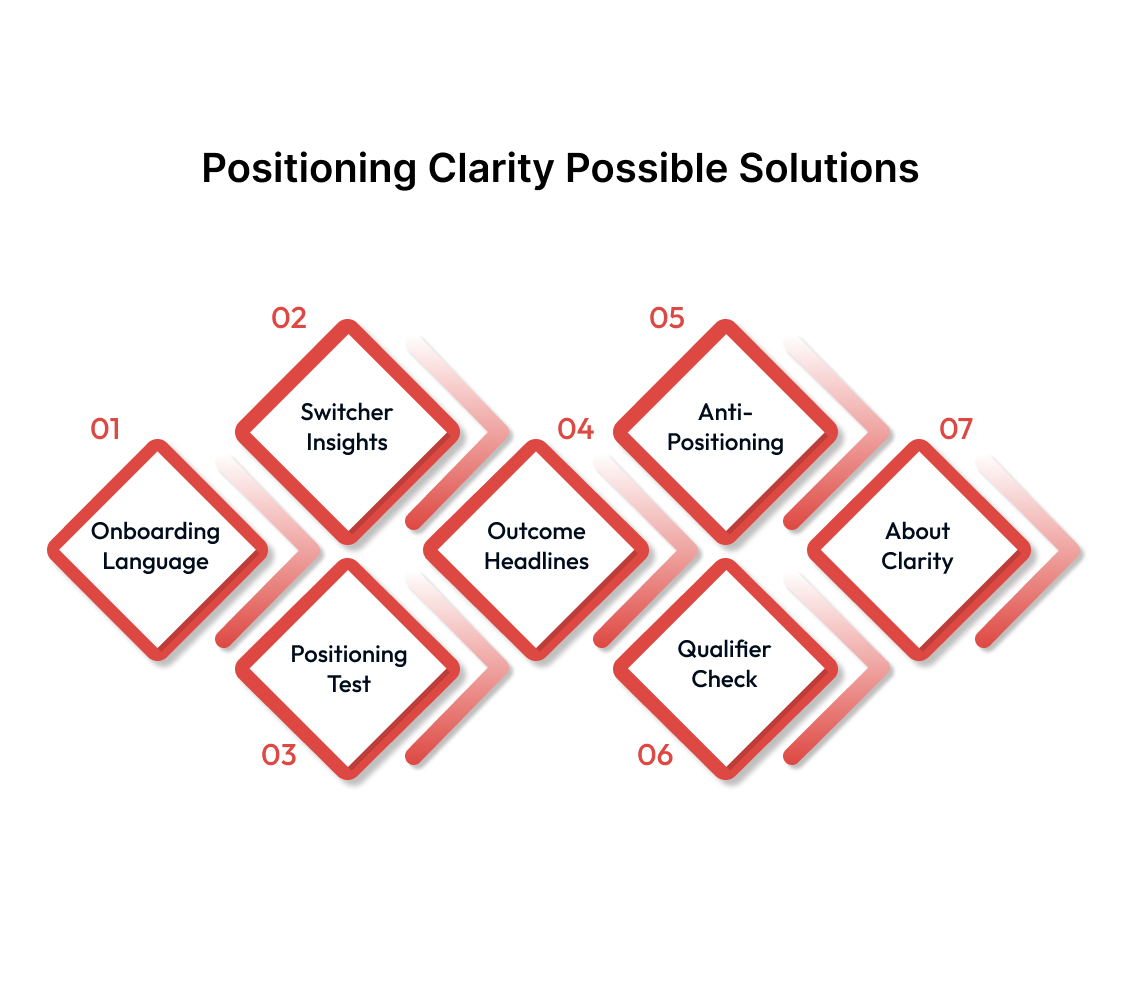
- Record customer onboarding calls and extract their language: Listen to how new customers describe their problems during implementation calls. They use simpler, more direct language than your marketing team ever will.
- Run competitor displacement analysis: Interview customers who switched from competitors to you. Document exactly what they said was wrong with the previous solution. This reveals your true differentiation in customer language.
- Test positioning with 5-second website tests: Show your homepage to strangers for 5 seconds, then ask what the company does. If they can't explain it accurately, your positioning is too complex for actual buyers.
- Create outcome-based case study headlines: Instead of "Company X uses our software," write "Company X reduced manual reporting by 40 hours per week." This forces you to think in terms of measurable business outcomes.
- Build positioning around what you DON'T do - Sometimes the clearest positioning comes from explicitly stating what you're not. This eliminates confusion and attracts customers who want your specific approach.
- Write your positioning without adjectives or verbs: If it only works with qualifiers like “powerful” or “easy-to-use,” you don’t have product-market clarity. Strip it to nouns. It should still stand.
- Revisit your “about” section: You’ll often find the clearest articulation there. Funny how the thing no one reads ends up explaining the product better than the homepage.
Mistake #3: You Are Still Pretending That AI Isn't Reshaping SEO
Search behavior has fundamentally changed. Google's AI-powered results now provide direct answers without requiring clicks to external websites.
Research shows that 80% of consumers now rely on zero-click results for at least 40% of their searches. This shift has reduced organic web traffic by an estimated 15% to 25% across most industries.
So does that mean SEO is pointless now?
No. Those who believe that SEO is doomed treat it as a one-time process, a product that's supposed to deliver immediate results. SEO is an ongoing investment, an asset you build over time.
The companies winning in 2025 understand that SEO now requires creating content that's so valuable people actually want to click through to read more.
The shift demands a different approach. Instead of optimizing for keywords, you need to optimize for intent. Instead of creating content that answers simple questions, you need to provide insights that AI summaries can't replicate. Strive to become the authoritative source that AI tools reference.
Possible solutions:
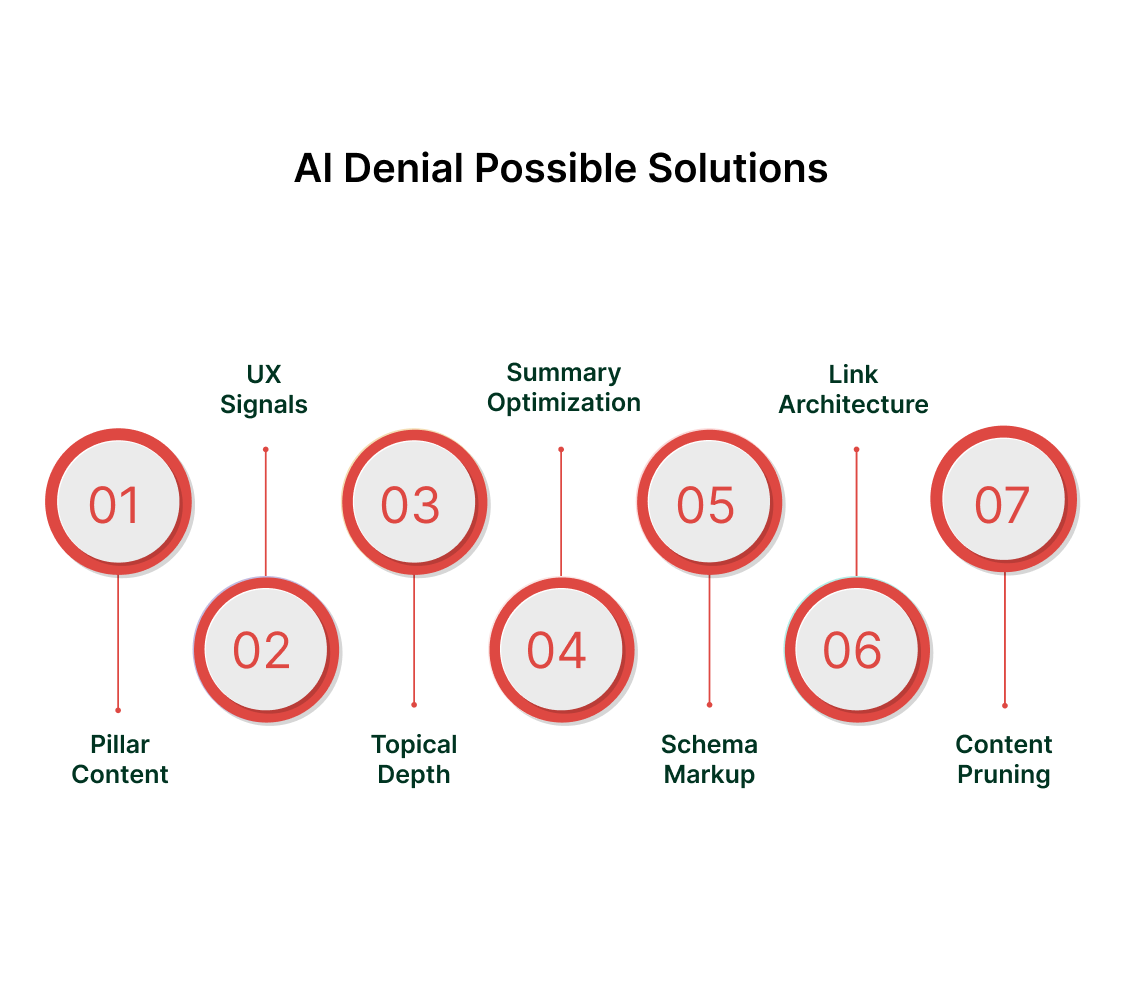
- Create comprehensive pillar content: Develop long-form resources that go deeper than what AI can summarize. This positions you as the expert source people click through to access.
- Focus on user experience signals: Google's algorithms now heavily weigh page speed, mobile usability, and user engagement metrics. These factors become even more important when competing with AI-generated results.
- Build topical authority systematically: Cover every aspect of your subject matter thoroughly rather than creating random blog posts. This helps establish your domain as the go-to resource in your field.
- Optimize for summarisation, not just ranking: AI answers scrape structure, clarity, and hierarchy. If your content is dense or meandering, it won’t get picked even if it ranks.
- Use schema markup properly: Rich snippets are your entry point to zero-click visibility. Without them, you’re invisible even on the first page.
- Make internal linking part of your content design process: Don’t bolt it on later. Think in content clusters and paths. You’re not writing pages, you’re building a network.
- Deindex low-value content before it tanks your domain: That blog from 2018 with 37 views? It's hurting you. It’s been quite a while since SEO has depended on quantity. Today, it’s all about thematic authority: prune or update.
Mistake #4: Relying Solely on One Marketing Channel
Investing heavily in SEO alone or pouring every ounce of creative energy into building a LinkedIn following might feel efficient. But it’s a fragile setup.
One algorithm update from Google and you’re on page 10, watching your best-performing blogs vanish from search overnight. Social media? Even more volatile. Reach fluctuates for reasons no one can fully explain. What worked this week might tank next month, and you’ll never really know why.
Even paid media has limits. If you're an enterprise betting everything on PPC alone, thinking it will solve your lead generation problems, you're setting yourself up for diminishing returns. The platforms own the audience, not you.
The mistake compounds when companies double down on whatever channel worked last quarter. They hire specialists, build entire teams around single channels, and optimize processes that become worthless overnight.
B2B companies particularly fall into this trap because they see competitors succeeding on one platform and assume that's the secret formula.
Possible solutions:
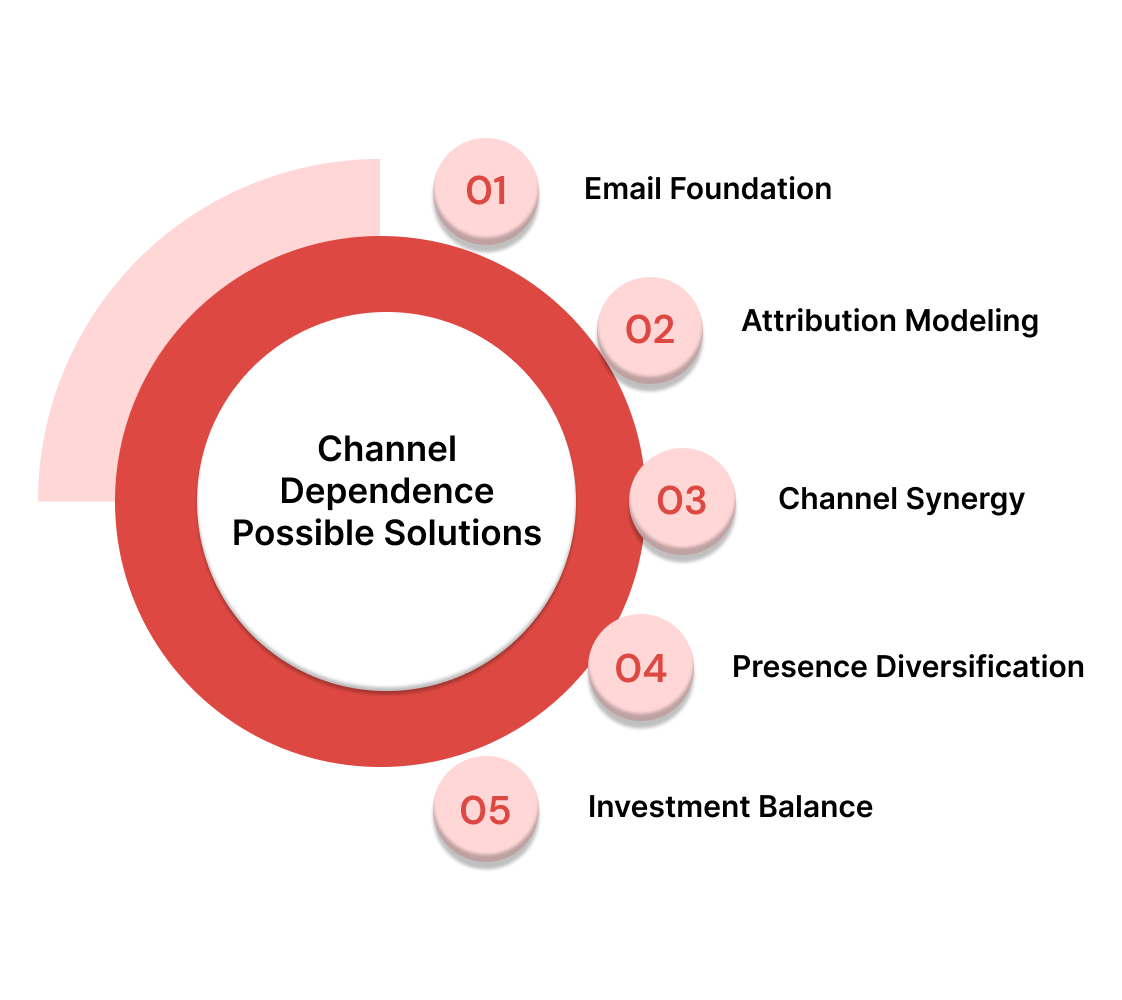
- Build email marketing as your owned media foundation: Email delivers an average ROI of 36:1 according to Litmus, and you control the entire experience. Create nurture sequences that move prospects through your funnel regardless of external platform changes.
- Implement cross-channel attribution modeling: Use tools like Google Analytics 4 (GA4) or specialized attribution platforms to track how different channels work together. This reveals which combinations drive the highest quality leads, not just the most volume.
- Create channel-specific content that cross-promotes: Your LinkedIn content should drive newsletter signups, your SEO content should promote your webinars, and your PPC ads should build your remarketing lists. Each channel should feed the others.
- Establish minimum viable presence across 4-5 channels: Instead of dominating one channel, maintain consistent activity across multiple touchpoints. This creates resilience when individual platforms change their algorithms or pricing.
- Use the 70-20-10 rule for channel investment: Allocate 70% of your budget to proven channels, 20% to promising experiments, and 10% to completely new approaches. This balances stability with growth opportunities.
Mistake #5: Overtargetting and Overoptimizing
When reach is down, the default response is to go harder. More emails. More posts. More CTAs. But excess rarely fixes irrelevance, it just makes it louder.
Cold outreach is a good example. Some companies send 50 follow-ups across 10 touchpoints and wonder why reply rates plummet. Posting five to ten times a day across platforms isn’t “consistency,” it’s fatigue. At best, you’re ignored. At worst, you’re flagged.
The same logic applies to websites. Many companies that reach out to us obsess over A/B testing every button color while ignoring fundamental user experience problems.
They want to add multiple CTAs per pag,e thinking more options equal more conversions. The result is cluttered interfaces that confuse visitors instead of guiding them toward decisions.
B2B SaaS companies are particularly guilty of overoptimizing their websites. They cram product features into hero sections, add animated counters for social proof, and create multi-step forms that require a PhD-level commitment to complete.
The irony is that these "optimizations" often decrease conversion rates because they overwhelm users with choices and distractions.
Possible solutions:
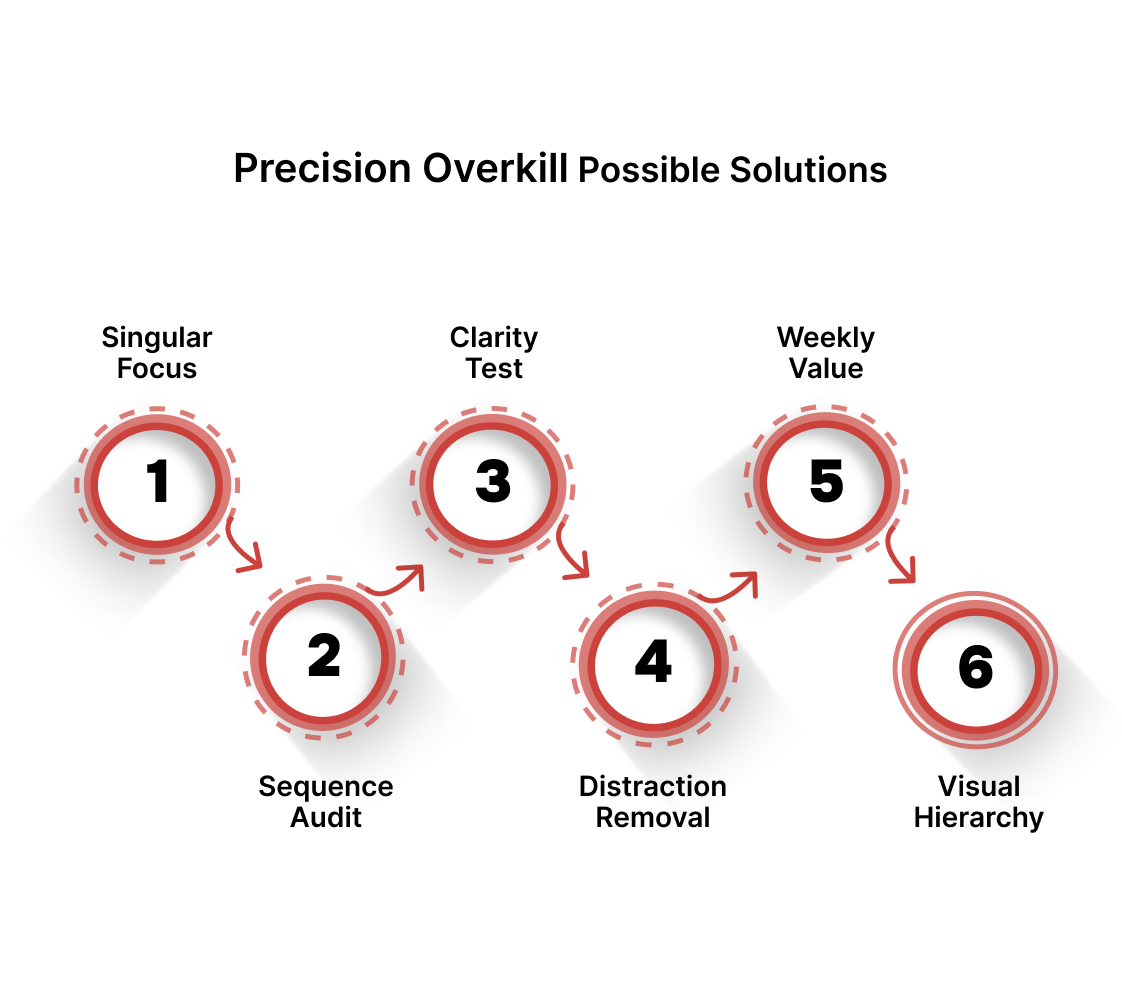
- Implement the "one primary action per page" rule: Each page should have one clear next step for visitors. Remove competing CTAs and secondary offers that dilute the main conversion goal.
- Use the 5-second clarity test for homepage optimization: Show your homepage to strangers for 5 seconds, then ask what action they should take next. If they can't identify the primary CTA immediately, simplify your design.
- Replace daily posting with weekly value-driven content: Create one substantial piece of content per week that solves a specific problem your audience faces. This builds authority better than multiple shallow posts that get lost in feeds.
- Audit your email sequences for message fatigue: Track unsubscribe rates and engagement drops across your nurture campaigns. If open rates decline after the third email, you're sending too frequently or providing insufficient value.
- Remove animations and auto-playing elements from key conversion pages: These elements increase cognitive load and can slow page loading times. Focus on clean, fast-loading designs that guide users toward your primary conversion goal.
- Audit your site’s visual hierarchy: Each page should guide one action. Secondary CTAs are fine, but don’t let them fight for attention. Simplicity drives clarity, which drives action.
How Beetle Beetle Can Help?
We are not jack of all trades but definite masters of a few - website design, development, revamp, and everything in between.
From researching your market, conducting hair-splitting analysis of your competitor messaging, to creating a detailed product positioning document, we handle the fundamentals that one mustn’t skip (but often do).
Once your positioning is in place, we build conversion-focused websites on Webflow. Our approach combines strategic messaging with visual design to carve out a unique visual identity for your brand and give it a distinctive voice through conversion-optimized website copy.
If your website has been underperforming or confusing visitors, we will deconstruct and reconstruct it to redefine how your audience perceives your brand. The result is a website that converts prospects instead of just collecting them.
Think we can be of help? Curious to learn more about our process, pricing, and ETA? Get on a call today.
FAQs
1. What is the biggest mistake digital marketers make?
Treating marketing as a series of tactics rather than a connected strategy. Without alignment, even strong assets underperform.
2. Does posting more often on social media improve reach in 2025?
Not necessarily. Overposting can hurt engagement. Platforms reward relevance and interaction, not frequency alone.
3. Is SEO still a worthwhile investment with AI-generated answers taking over?
Yes, but the rules have changed. Structured, specific content with depth now wins over keyword-stuffed filler.
4. How do I know if my website is too optimized?
If users feel overwhelmed, distracted, or unsure of what to do next, it's over-optimized. More motion and CTAs don’t always mean better outcomes.
5. What’s a better alternative to cold email in B2B SaaS?
Focused account-based outreach paired with valuable content. Target by problem, not just persona, and skip the generic pitch.


.jpg)





























